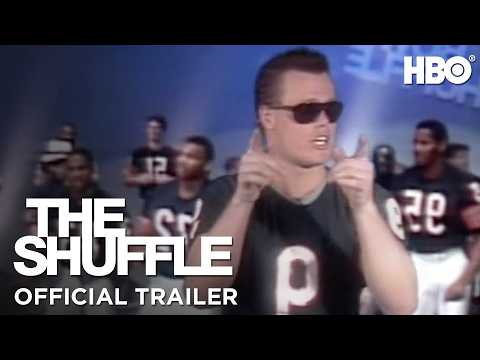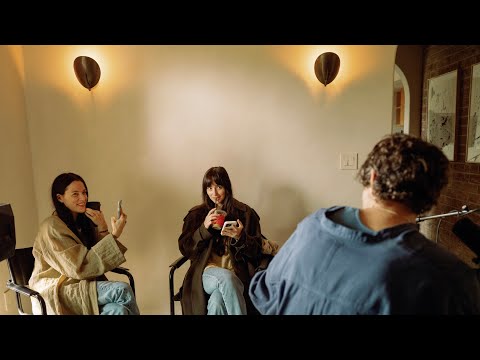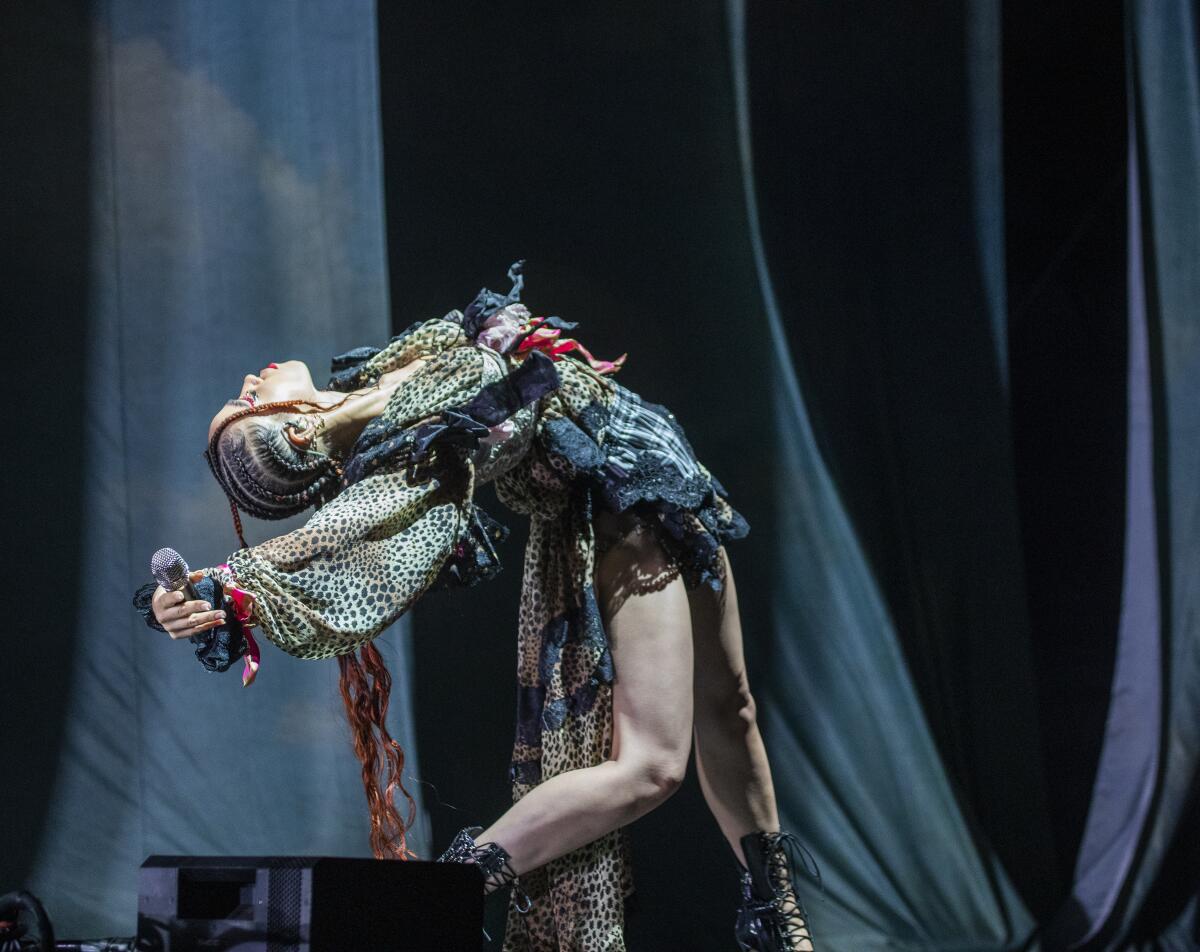Director Kacho López Mari’s critically and culturally acclaimed portfolio includes over 40 music videos and short films that, if played at a YouTube watch party, could leave you and your primos feeling as if you just flip-booked through modern Latin music history.
Some of the music videos have captured the trophies of genres, like Tego Calderón’s “Abayarde” and Daddy Yankee’s “Gasolina,” both essentials on any reggaetón playlist. Other visuals were works of activism — like Bad Bunny’s “El Apagón — Aquí Vive Gente,” the 22-minute music video and investigative short that shed light on the economic crisis that Puerto Ricans continued to face after Hurricane Maria.
A music video has the power to capture today’s culture, tomorrow’s stars, and yesterday’s immediacy. And thanks to López Mari’s legendary lens, we’re able to behold many iconic Latin music moments. Here are 15 of his must-see videos.
These interviews have been edited and condensed for clarity.
Tego Calderón, “Abayarde / Gracias” (2003)
Filmed in Manatí, Puerto Rico
Before producing and directing music videos, López Mari produced “underground” parties in Puerto Rico — and commercials at Paradiso Films.
That changed when López Mari’s superior, Sigfredo “Freddy” Bellaflores, heard his young son, Sigfredo Jr. — who would go on to produce videos for Bad Bunny — listening to Tego Calderón’s music in the shower. The next day, Freddy came into the office and threw the Calderón CD at López Mari.
“ ‘If you can reach that guy, we’ll do a video for him for free,’ ” López Mari recalled Freddy telling him. “ And I’m like, OK, I’ll get that guy.”
A few days later, López Mari used his party-producing connections to set up a meeting with Calderón’s team, which told López Mari he could pick the song off Calderón’s debut album, since Paradiso Films was financing the video; the team then asked him to meld another song, “Gracias,” into the visual.
“ That’s why the video is a six-minute piece,” said López Mari. “Back in the day, the reggaetón videos would be two or three songs in each video.”
The young director scouted the location, created the storyline to connect the two songs and presented the treatment to Calderón. Soon afterward, López Mari shot his first music video.
“It was a big phenomenon,” he said. “When that came out, Tego was like a rocket going up to the moon.”
Ricky Martin, “Tal Vez” (2003)
Filmed in Buenos Aires
López Mari co-directed this video with Carlos Pérez, his childhood friend who would later direct the video for Luis Fonsi’s “Despacito.” Both 20-somethings at the time, López Mari and Pérez, recruited a “dream team” to execute it — including Andrzej Sekula, cinematographer for “Pulp Fiction” and “Reservoir Dogs,” as well as Brigitte Broch, Oscar-winning production designer and art director for “Amores Perros” and “Romeo + Juliet.” The editor was Jeff Selis, the most nominated editor in the history of the MTV Video Music Awards.
Ricky Martin needed ample star power for what would be his first Spanish release since “Livin’ La Vida Loca.” Martin liked López Mari’s treatment so much that he would commission the same crew to make the video for 2003’s “Jaleo.”
Daddy Yankee, “Gasolina” (2005)
Filmed in Santo Domingo, Dominican Republic
Released pre-YouTube, the original video for “Gasolina,” the lead single off Daddy Yankee’s 2004 album “Barrio Fino,” maximized MTV’s four-minute allotment by mixing in two additional songs into the same visual: “No Me Dejes Solo” (which featured Wisin y Yandel) and “King Daddy.”
Yet when the song blew up, Daddy Yankee needed a longer video — and fast. However creatively edited, the visual actually loops the minute-and-a-half of material originally shot, making it a controversial piece for the co-directors.
In a phone interview, Pérez said that he values the song’s cultural and historical impact, but the video “never felt reflective of our work.” López Mari agreed it wasn’t his finest piece, but it did introduce the world to reggaetón and helped establish an aesthetic for the genre.
Calle 13, “Adentro” (2014)
Filmed in Arizona and Puerto Rico (Barriada Morales in Caguas and Cantera Roca Dura in Manatí)
From Calle 13’s final album, the video for “Adentro” earned López Mari a Latin Grammy nomination for best short form music video. In it, frontman René Pérez Joglar, or Residente, raps regretfully about buying a Maserati as baseball legend Willie Mays hands him a bat, which he then uses to smash the car. It’s later pushed off a cliff.
“For me, it’s a work of art,” said López Mari. “It’s basically a piece to destroy a half-million-dollar car — that [Residente] bought as an anti-capitalist statement.”
Calle 13, “Multi_Viral” featuring Julian Assange, Kamilya Jubran, Tom Morello (2014)
Filmed in the West Bank
Art is a weapon for López Mari and Calle 13, who sympathized with the Palestinian struggle. López Mari told me he considered the “Multi_Viral” video, which was filmed in the West Bank in 2013, was “one of the most important projects” he’s ever worked on.
The video follows Palestinian children as they build a guitar from parts of a gun. Rage Against the Machine guitarist Tom Morello, who’s featured on the song, joined them onset in the West Bank. López Mari’s brother, Santiago “Chago” Benet Mari, who served as deputy photographer, told me how filmmaking has taken him and his family places he would have likely never otherwise visited.
“Film is a universal language,” said Benet Mari.
Calle 13, “Ojos Color Sol” featuring Silvio Rodríguez (2014)
Filmed in Buenos Aires
“Ojos Color Sol” was filmed the same day as the memorable 2014 World Cup semifinal match in which Germany thrashed Brazil, 7-1, so concentration levels onset were “fragile” among die-hard soccer fans that day, López Mari recalled.
Still, López Mari’s video would go on to win him his first Latin Grammy for best short form music video, alongside Tristana Robles, López Mari’s life partner, as well as the producer and co-founder of Filmes Zapatero. The song featured Cuban musical legend Silvio Rodríguez, and the video starred Golden Globe Award-winning Mexican actor Gael García Bernal and Spanish actress María Valverde, who share a powerful kiss.
Juanes, “Loco de Amor (La Historia)” (2014)
Filmed in Puerto Rico (San Juan, Río Piedras, Bayamón)
The 16th annual Latin Grammy Awards were historic. After “Ojos de Sol” won best short form music video, “Loco de Amor (La Historia)” won best long form music video — a 16-minute project visualizing four of Colombian superstar Juanes’ songs. This made López Mari the winner of both categories in the same night — a feat never accomplished before or repeated since.
“I like the aesthetics of [López Mari]’s work and his way of working,” Juanes told the San Diego Union-Tribune in 2014.
Calle 13, “La Vida (Respira el Momento)” (2015)
Filmed in Salinas, Puerto Rico
“La Vida (Respira el Momento)” was the final video López Mari released with Calle 13 before they disbanded. It featured López Mari’s daughter and nephew, Residente’s nephew, as well as pro boxer Miguel Cotto and MLB player Ángel Pagán. But there’s an even buzzier person who makes an appearance in this video — filmmaker, actor and poet Jacobo Morales, the director behind the 1989 film “Lo Que le Pasó a Santiago,” the only Puerto Rican film to earn an Oscar nomination to date.
Morales sits down in the middle of a road to look through a handful of photos, reflecting on his life’s most precious moments — inadvertently foreshadowing his later role in videos from Bad Bunny’s 2025 album, “Debí Tirar Más Fotos,” such as “Baile Inolvidable,” which were also directed by López Mari.
Juanes, “Mis Planes Son Amarte” (2017)
Filmed in Mexico (Veracruz, Mexico City and its outskirts) and Medellín, Colombia
“Mis Planes Son Amarte” directly translates to “My Plans Are to Love You.” A play on words in Spanish, it could also be heard as “My Plans Are to Mars.” Using that double meaning, Juanes and López Mari innovated what’s considered to be Latin music’s first major visual album (every song has a video): a one-hour film of 12 songs that follows Juanes’ character as an archaeologist and astronaut, exploring the dimensions of life and love.
Chayanne, “Di Qué Sientes Tú” (2018)
Filmed in Mexico City
In 2018, López Mari added the actor and pop balladeer Chayanne to his roster of Puerto Rican icons he’s collaborated with. For the making of Chayanne’s music video for “Di Que Sientes Tú” (Say What You Feel), López Mari took the crew to Mexico City.
“It came at a time when I was falling in love with books again,” said López Mari. “I was surrounded by literature [by Gabriel García Márquez], [Jorge Luis] Borges, Luis Rafael Sánchez — and that literary energy made its way into the set. It all came together in a way that was beautiful and poetic.”
Bad Bunny, “Callaíta” (2019)
Filmed in Puerto Rico (Arecibo, Hato Rey neighborhood of San Juan, Guaynabo)
In the first of many collaborations between Bad Bunny and López Mari, they created a “dream-like atmosphere” of summertime in Puerto Rico. In a 2023 video interview with Vanity Fair, Bad Bunny said it successfully conveyed the feeling of a “hug.” Bad Bunny also said he knew the actress, Natalia L. Garcia, was the right woman for the project as soon as he saw her.
López Mari discovered Garcia on Instagram. “I [loved] her look,” he said. “She reminded me of Uma Thurman in ‘Pulp Fiction’ because of the haircut.”
López Mari’s brother Benet Mari, served as the director of photography — and happened to have the resources to get a carousel on the beach. “Everything was perfect,” said López Mari, calling it a “beautifully executed video” that hit all the notes and goals of marrying image and song.
Don Omar, Residente, “Flow HP” (2021)
Filmed in San Juan, Puerto Rico, and Los Angeles
In the video for their first-time collaboration, “Flow HP,” Don Omar and Residente, both Puerto Rican industry veterans, amplify their pride for the motherland by rapping in front of the island’s flag, resulting in an unforgettably powerful visual. López Mari and Residente actually directed the video together.
Bad Bunny, “El Apagón — Aquí Vive Gente” (2022)
Filmed in Puerto Rico (San Juan, Güajataca, Rincón)
“[Taylor Swift] fills it [her videos] with Easter eggs,” said López Mari. “So, what does Benito do? He fills it with Puerto Rican history.”
In nearly six months, López Mari and his team worked to produce what began as a Bad Bunny video and expanded into a hard-hitting documentary. In collaboration with Puerto Rican investigative journalist Bianca Graulau, the short film shed light on the recurring blackouts in Puerto Rico after 2017’s Hurricane Maria and how the government’s lackluster recovery efforts exacerbated the greater infrastructural crisis — all of which they strongly consider to be byproducts of U.S. colonialism.
(Fun fact: This video also featured clips from López Mari’s directorial debut with Calderón.)
Juanes, “Canción Desaparecida” featuring Mabiland (official video) (2023)
Filmed in Medellín, Colombia, and rural outskirts
In this video, Juanes and singer-MC Mabiland call to mind more than 121,000 people forcibly disappeared between 1985 and 2016 in their native Colombia. After long shying away from political and social content that colored his first album, Juanes knew he wanted to make an impactful video with López Mari, who felt connected to the story because of his own political inheritance.
Bad Bunny, “Baile Inolvidable” (2025)
FILMING LOCATION: San Juan, Puerto Rico
Normally, López Mari listens to a song several times before he writes a treatment for the direction of a music video. Yet for “Baile Inolvidable,” he only got to listen to it once. He happened to be in the room when Bad Bunny presented the album “Debí Tirar Más Fotos” to Apple Music executives and his crew for the first time.
López Mari says he met with Bad Bunny weeks later, in the Río Piedras music studio where the artist had recorded the song. There, López Mari presented his storyboard drawings and location ideas for the video and listened to the song “like 20 times,” he said.
López Mari shot the dance class portion at the Arthur Murray Dance Studios, a famous school for classic salsa in San Juan. The live performance portion of the video was filmed at the University of Puerto Rico’s auditorium, where Robles and López Mari had recently creative directed a Concert for Energy Independence for Casa Pueblo.
“As every artist evolves, the same happens to us directors,” said López Mari. “We keep learning… [And] hopefully, more videos will be made that are more relevant, [that] contribute more to the cultural exchange, [and] that aren’t just a bunch of flashy visuals and bells and whistles.”





























